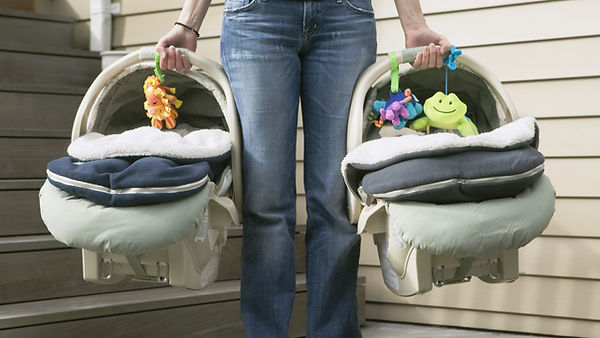

Postpartum & Newborn Care ~ Lactation Support ~ Bodywork ~ Classes ~ and more!
Car Seat Safety

Car Seat Installation is another service that I will be adding soon. To be able to learn the correct way of navigating through so some many different models of car seat today on the market, I need to become a CPS Technician (Child Passenger Safety Technician) by getting the proper training provided by National Child Passenger Safety, in partnership with SafetyBeltSafety USA, which is the national non-profit organization, “dedicated to protect children from deaths and injuries resulting from riding unrestrained in motor vehicles." I am very excited about acquiring this new knowledge/ training so I can share with you soon. Please, come back again!!
Car Seat Safety Tips

According to SafetyBeltSafe USA the most asked question from parents is Which safety seat is “the best" for my child? The short Answer is: The "best” seat is the one that fits your child, fits you car, and fits your family’s needs in terms of comfort and convenience, so that you’ll use correctly on every single ride. Try before you buy.
The long answer is, you have to consider both the age and size of your child by following these general rules:
-
Keep babies rear facing as long as possible, at least to age TWO.
-
Keep children in a seat with harness as long as possible.
-
Keep older children in a belt-positioning booster as long as possible. Most children don’t fit the belt correctly until they’re 10-12 years old.
-
ALL CHILDREN RIDE IN THE BACK.
Newborns may ride a rear-facing-only seat (certified for rear-facing use only from birth or 3-5 lbs, up to 22-40lbs depending on the model) or rear-facing convertible seat. Convertible are certified for rear-facing use up to 30-50 lb and forwarding –facing use up to 40-85 lbs. It may be more economical to use a convertible seat from birth, but not all models fit tiny babies. Look for a model that has at least four shoulder strap slots and a choice of two or three crotch strap position. Whether a rear–facing-only seat or convertible is used, the seat is tilted half-way back (check angle indicator on the side of the seat) and strap are in slots at or slightly below shoulder level.
Babies should ride rear facing as long as possible to protect the spine and prevent death or lifelong disability. Babies have heavy heads and weak necks with soft bones and stretchy ligaments. In frontal collision, which is the type most likely to cause death or severe injure, a forward-facing baby’s neck may stretch up to two inches but the spinal cord ruptures if it stretches more than one-fourth of an inch. At about one year, the bones start to harden and the baby gradually becomes less vulnerable . SafetyBeltSafe USA and the American Academy of Pediatrics recommend rear–facing until at least two years, since studies show that children between age one and two are five and half times safer in a crash when they ride facing back of the car.
Children over the age of two
For best protection, children should ride rear facing as long as possible based on the weight limit shown in the safety seat instructions. Current convertible eats may be use rear-facing up to 30-50 lb. Most young children are comfortable sitting with their legs bent outward. The head must be at least one-inch-to- one-and- a-half inches from the top edge of the plastic shell.
Other Children: If a child is ready to stay properly seated without being held in place by a 5 point harness, a belt positioning booster is the next step. Most kids need to ride in a booster seat till age 10 to 12. Using booster instead of just a safety belt prevents 45% of crash injuries according to SafetyBeltSafeUSA. If your child isn’t using a booster, try the simple test below the next time you ride together in the car. You may find that your child is not yet ready to use safety belt without a booster.
The 5-Step Test.
1. Does your child sit all the way back against the auto seat?
2. Do your child’s knees bend comfortably at the edge of the auto seat?
3. Does the belt cross the shoulder between the neck and arm?
4. Is the lap belt as low as possible, touching the thighs?
5. Can the child stay seated like this for the whole trip?